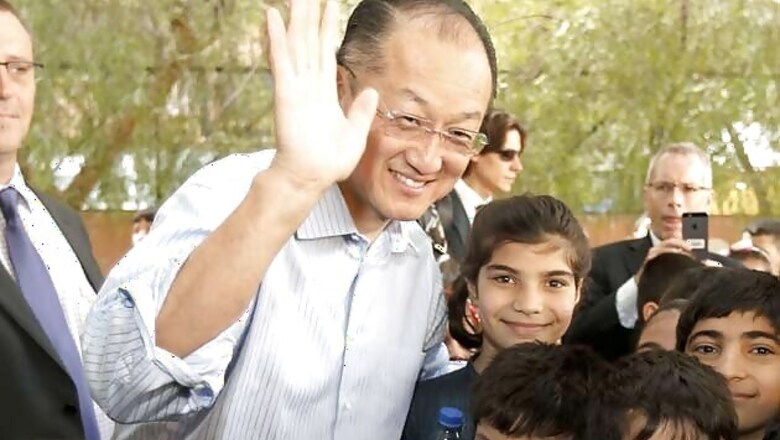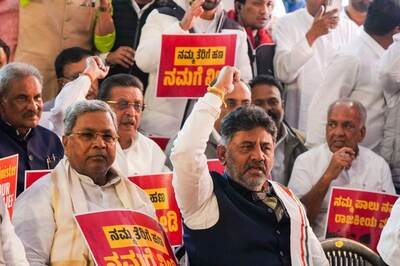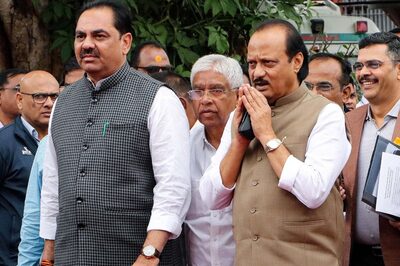
views
Washington: World Bank President Jim Young Kim has said India can save more than 27,000 lives and create over 128,000 jobs if it builds 1,000 kilometres of new bus rapid transit (BRT) lanes in the next 20 years. "If India built 1,000 kilometres of new, bus rapid transit lanes, over 20 years, that could save more than 27,000 lives by reducing air pollution and accidents and create more than 128,000 jobs," World Bank President, Jim Young Kim, said.
Speaking at the release of a report "Climate-Smart Development", according to which USD 3 4 billion is needed to develop 1,000 kms of BRT corridors in about 20 cities across India within 6 12 years, kim said India could also reduce "greenhouse gas emissions by about 42 million tons".
Released in advance of the UN Secretary General's Climate Summit in September, the report- that focuses on five countries - Brazil, China, India, Mexico and the US plus the European Union - shows the potential economic, health and other gains from scaling up climate-smart policies as well as projects already in place in developing countries like Brazil, India and Mexico.
"The report's findings show clearly that the right policy choices can deliver significant benefits to lives, jobs, crops, energy , and GDP as well as emissions reductions to combat climate change," he said, adding the report is good news for the global economy and the planet.
Policies promoting clean development in transport and energy efficiency will lead to global growth. "We already know that we need to make smart policy choices to combat climate change. What we didn't know is that these policies make economic sense, as well. This report removes another false barrier, another false argument, not to take action against climate change.
"Taking action to preserve our planet is what we need to do for future generations, and this modelling shows that smart choices will also improve local and global economies," he said. According to the President, the report looked at the impact of shifting to the cleaner policies across five countries and the European Union.
It found that they could increase global GDP by USD 1.8 trillion per year by the year 2030. "That's a 1.5 per cent increase over a business-as-usual scenario that assumes average economic growth where emission reductions are not pursued. Annual gains would come from improved productivity and efficiency, including saving almost 16 billion kilowatt-hours," he said.
He said the policy shifts would also avert 94,000 premature deaths from air pollution each year by 2030 and improve crop productivity.
The greenhouse gas reductions from those policy changes would account for about 30 per cent of total emissions reductions needed in 2030 to limit global warming to 2 degrees, which is the current global target, he said. "If financing and technology investment increased, the potential benefits could reach as high as USD 2.6 trillion or 2.2 per cent additional global GDP by 2030," he said.
The report says recent work by the World Bank in India finds that the combined cost of outdoor and indoor air pollution is more than USD 40 billion annually, or more than three percent of India's 2009 GDP. When other environmental degradation is factored in, including crop, water, pasture, and forest damage, the total is closer to 5.7 per cent of India's GDP affecting mostly the poorest members of society, it added.
Noting that affordable, low-emissions transport is crucial for development, the report said people need effective transit options for access to jobs, education, and health services adding that economic activity requires the transport of goods.
"Well-designed and -enforced bus rapid transit (BRT) is a relatively inexpensive way to get people out of high-emitting vehicles and to reduce traffic congestion and pollution. In 2009, the World Bank approved a sustainable urban transport project for India that included BRT in three pilot cities," it said adding that the Pimpri-Chinchwad BRT may serve as a model for replication across India.
The Bank said the results of the Pimpri-Chinchwad BRT analysis and a Ministry of Urban Development (MOUD) study of more than 87 cities across India were used to estimate the length of viable BRT routes that could realistically be developed across India, as well as the per-kilometre costs and benefits of such development.
For this case study, the length was estimated at approximately 1,000 kms, including more than 422 kms that is already included in government plans. The analysis estimates that investment of USD3 4 billion would be needed to develop 1,000 km of BRT corridors in about 20 cities across India within 6 12 years, the bank said.



















Comments
0 comment